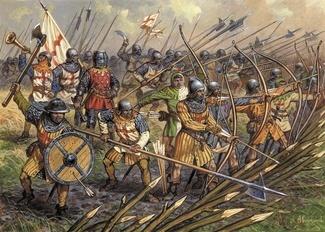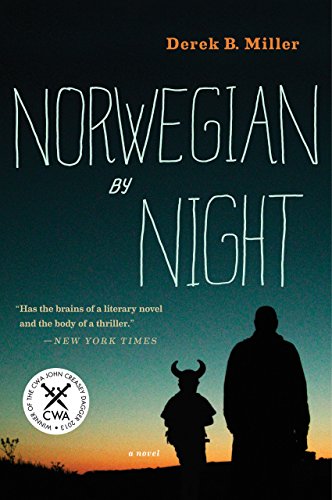Our reading in 2019
2019 was a good year for reading. If you’ve been reading the blog, you know I went to Iceland this year (trip report). I read a lot of Icelandic stuff in preparation (my reading list here), so I won’t recount that. Other big themes for the year: lots of Social Reading, using Bookship, of course!; the usual dose of spy novels and some literary fiction; and lastly comfort food, in the form of old favorites and Jack Reacher books.
Bookship continues to enable a lot of social reading for me. With various friends I read Henry V, Justine (I love Lawrence Durrell!), Following the Equator by Mark Twain, The Hound of the Baskervilles and Tarzan by Edgar Rice Burroughs (who once lived about a mile from my house!). I also re-read Dan Simmon’s Hyperion with my family, which was good fun! The book club I am in read some fun stuff as well, including Unfamiliar Fishes, a fascinating history of post-contact Hawaii, Oryx and Crake by Margaret Atwood, The Power by Naomi Alderman, and the rather disappointing Life After Google by George Gilder.

Reading Henry V with my friend Thomas was a high point of the year for me. It’s the first Shakespeare I can remember reading (I’m sure I read Romeo & Juliet in high school, but I don’t remember it). Learning to flow with Shakespeare’s language, stopping occasionally for a dictionary check, but usually just going with the flow, was good fun. We used that reading as a jumping-off point to explore Salic Law (kidding, sort of, it’s a plot point), the history of the battle of Agincourt, where a heavily outnumbered English force (estimates vary, but commonly reported as 6000 English against roughly 30,000 French), destroyed the French force, the English Longbow being the decisive factor. We also explored the various theatrical renditions of Henry V (Olivier, Branagh, et. al.). I also re-read Bernard Cornwell’s wonderful book Agincourt, a nice fictional complement. Henry V is the source of a number of quotes you may know, yet not know whence they came:
“Once more unto the breach, dear friends, once more!”
“We few, we happy few, we band of brothers”
“The game’s afoot!” (you may have thought, as I did, this originated with Sherlock Holmes)
“Oh for a muse of fire”
and my personal favorite, delivered best by Branagh.
I was not angry since I came to France! (watch it here)
Kenneth Branagh delivers the goods.
Inspired somewhat by Traveling the Equator, Mark Twain’s travelogue of the Pacific and Asia, I tackled Max Adams’ In the Land of the Giants, an historical travelogue of Dark Ages Britain. Very interesting, although extremely dense in history and place names, so I had to read in increments, on-and-off for most of the year.

On the more serious side, I read some truly outstanding novels this year. The most memorable of them, Norwegian by Night, is actually not entirely serious. In fact it’s the funniest book I’ve read in a long long time.
Definitely more serious is James Salter, whose writing I love deeply. Solo Faces is a literary exploration wrapped inside a mountain climbing adventure novel. Not unlike, although not quite the equal of, Wind, Sand and Stars. But close. Light Years is the heartbreaking story of a disintegrating marriage. One of my favorite passages (which is not bleak as is the rest of the novel).
“I think I’d like a martini,” Viri said.
He drank one, icy cold, in a gleaming glass. It was like a change in the weather. The pitcher held another, potent, clear.
“How do you make them so cold?” he asked.
“Well, you happen to have commanded the drink which is, in my opinion, the one true test. You have to have the right ingredients— and also you keep the gin in the freezer.”
The Narrow Road to the Deep North is another grim masterpiece, the harrowing experience of Australian prisoners of war building the Burma Railway during WWII. City of Crows is an atmospheric medieval tale by Chris Womersly, well worth the read. Transcription is WWII-era historical fiction from Kate Atkinson. I found it good, but not great; some of her other works are likely better starting points. Out of left field, I found a copy of Miské’s novel Arab Jazz, a unique murder mystery set in the Arab section of Paris. As The Guardian says, “Arab Jazz is a genre novel in the same way that Pulp Fiction is a genre film – superseding the form even as it pays homage”.
Spy Stuff.
You know I love a good spy novel. This year I read a number of good (although perhaps not great) spy novels. The exception to the “great” are the few John Le Carré books that I read. Joseph Kanon’s Leaving Berlin was very atmospheric and good fun; but I felt it covered territory that Alan Furst has already covered quite extensively. Warlight, by Michael Ondaatje was equally atmospheric, but felt confused and rambling; I couldn’t quite figure out the point of the book. I did a healthy dose of “thriller” spy novels in the form of Olen Steinhauer’s Nearest Exit, The Cairo Affair, and Liberation Movements. All solid efforts but not perhaps rising to the best of his work or thrillers in general. Mick Herron’s The List, a novella, had me laughing til the scotch came out of my nose.
Comfort food
Bookish “comfort food” is what I call it when you are tired and want to read, and just get a great story without the effort of absorbing something new. It can be a book you’ve already read, or an easy read where you love what’s happening but you kind of already know where it’s going (looking at you Lee Child). A number of this year’s spy novels were comfort food: one of my favorite books of all time, Tim Power’s Declare, a crazy quilt of a novel including spies, Djinn (the supernatural kind), Kim Philby, Lawrence of Arabia, Mt. Ararat, Saharan adventures, Nazis and the Cold War. And with a plausible historical storyline behind it. John Le Carré’s Call for the Dead, and Smiley’s People, Alan Furst’s Blood of Victory, Lee Child’s Make Me, Past Tense, and The Christmas Scorpion. For about the nth time I re-read Tolkien’s The Two Towers, my favorite of the three books, and William Gibson’s Count Zero, voodoo-inspired science fiction featuring world-weary, middle-aged mercenary Turner, one of my favorite of Gibson’s characters.
what’s on deck
I am just finishing Smile of the Wolf, the last of my Iceland books, and wow. It’s like a time machine to 10th century Iceland. If that sounds even mildly interesting, read this book. The first half is utterly immersive.
We’re traveling to Greece and Rome late this year, so I expect to be doing a lot of relevant reading. Thinking about Mary Beard’s SPQR, Emily Wilson’s Odyssey, probably some Mary Renault to get me started. My book club has just started The Left Hand of Darkness, which I have not read since high school, so I’m looking forward to revisiting that.
